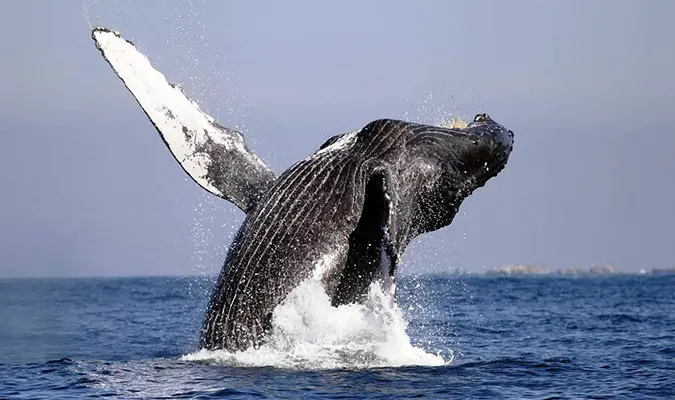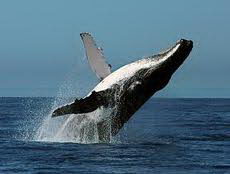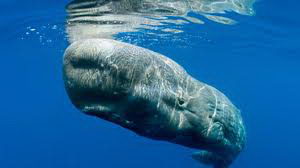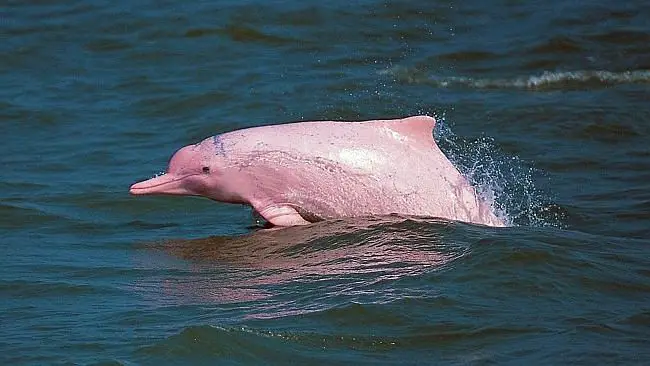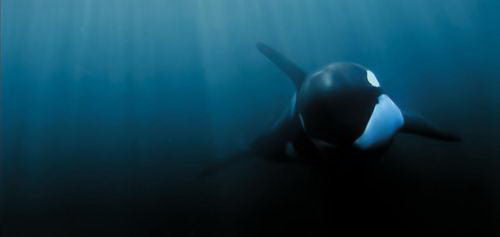I’m going to share some of the most useful fin whale facts including fin whale diet, habitat, reproduction, and physical behavior. The fin whale (Balaenoptera physalus) is a marine mammal that belongs to the family of Balaenopteridae. These whales are also called razorback, common rorqual, and finback whale. This is regarded as the second largest animal in the world comes after the mammoth blue whale. The fin whale can grow to a sieze of about 27 meters (89 feet), with the weight measuring at 74 tonnes (73 long tons; 82 short tons). Roy Chapman Andrews denote this whale as the “greyhound of the sea…because of its magnificent and slimmer body which is built just like a racing yacht and the species can beat the speed of the fastest ocean steamship.” These whales are brownish-grey in color. Scientists have recognized two major species of fin whales; North Atlantic fin whale and the Southern Hemisphere fin whale. The fin whale inhabits in all the chief oceans of the world encompassing polar and tropical waters. However, they do not exist in north and south poles of ice pack. The largest concentration of these individuals is known to reside in cool and mild waters. They largely feed on crustaceans, copepods, small fish, krill, and squid. Fin whales are one of those unluckiest mammals that were hunted excessively in the 20th century making it endangered species. According to a rough estimate, more than 725,000 fin whales were hunted in between 1905 to 1976, leaving only 38,000 individuals in that region.
Interesting Fin Whale Facts
- The fin whale can easily be documented by its long back, noticeable dorsal fin, tall spout, unique coloration.
- The male fin whales living in the Northern Hemisphere measures around 18.5 meters (60 feet) to 20 meters (65 feet) in length; while those inhabiting in the Southern Hemisphere are 20.5 meters (67 feet) to 22 meters (72 feet) long.
- The longest fin whale ever recorded was at 24.5 meters (80′ 6″ ft) in the North Atlantic and the longest specimen measured by True (1904) was at 21.5 meters (70′ 8″ ft). Both these animals were females.
- The fin whale living in the North Pacific was also sighted as the longest species with the length measuring at 22.9 meters (75 feet) for males while females are 24.7 meters (81 feet). According to a reliable source, the longest fin whale measured at 20.8 meters (68 feet) for males and 22.9 meters 75 feet) for females.
- In the Southern Hemisphere, the longest fin whale measured at 25 meters (82 feet) and 27.3 meters (89′ 6″ ft). According to the Mackintosh and Wheeler (1929), the precise measurements of these whales were recorded at 22.4 meters (73′ 7″ ft) and 24.5 meters (80′ 5″ ft).
- Another confirmed measurement was taken by the F. A. Spencer with the length of 25.9 meters (85 feet) for female that inhabits in the southern Indian Ocean.
- The weight of the largest fin whale measure around 22.7 meters (74.5 feet). This was thought to be of pregnant female. It weighed around 69.5 tonnes (68.4 long tons; 76.6 short tons).
- The fin whale attain the maturity age in between 25 and 30 years.
- The lifespan of these whales is 90 – 100 years, with some species have survived up to 135 – 140 years.
- The hatchlings measure around 6.5 meters (21 feet) in length along with the weight of 1,800 kg (4,000 lb).
- The fin whale exhibits light grey-colored body with rather paler undersides.
- They have a series of 56 – 100 grooves underneath their body.
- The fin whale has a noticeable dorsal fin that measures at 60 cm (24 inches).
- The height of the fin whale’s spout is around 6 meters (20 feet) and they tend to blow 5 – 7 times in quick chains.
- The fin whales are usually found at a depth of about 470 meters (1,540 feet). They would last for 6 minutes with the maximum duration of 17 minutes. They do not breach.
- These whales are capable to keep the swimming speed of 37 km/h (23 mph), with short bursts of 40 km/h (25 mph).
- The fin whales are often found in groups comprising 6 – 10 individuals.

Reproduction
- The mating season of fin whales begin in winter and it takes place in low-altitude moderate waters.
- The gestation period lasts for 11 months.
- The mother weans its hatchlings for 6 – 7 months until they reach 11 meters (36 feet) to 1 2meters (39 feet) by length.
- The females will begin to reproduce again after 2 – 3 years.
- The female fin whales reach the maturity age 6 – 12 years when they are 17.7 – 19 meters (58 – 62 .5 feet) for species living in the Northern Hemisphere and 20 meters (65 feet) for those residing in the Southern Hemisphere.
What Do Fin Whales Eat
The fin whales primarily feed on squid, copepods, krill, and crustaceans. The whales inhabiting in the North Pacific, are known to prey on Euphasusia pacifica, Nyctiphanes simplex, T. spinifera, squid, herring, walleye Pollock, sand lance, capelin, E. superba, and larger copepods. The fin whales hunt by swimming at a rapid speed of about 11 km/h (6.8 mph), and they gulp down 70 cubic meters (18,000 US gal;15,000 imp gal) of water in a single gulp. The fin whales have 262 to 473 baleen plates on each side of the mouth. The length of the plate measures around 76 cm (30 inches), with the width measuring at 30 cm (12 inches). They are often found at a depth of about 200 meters (660 feet). The fin whale is known to consume up to 1,800 kg (4,000 lb) of food each day. They are adept to gulp down 10 kg (22 lb) in each gulp.

